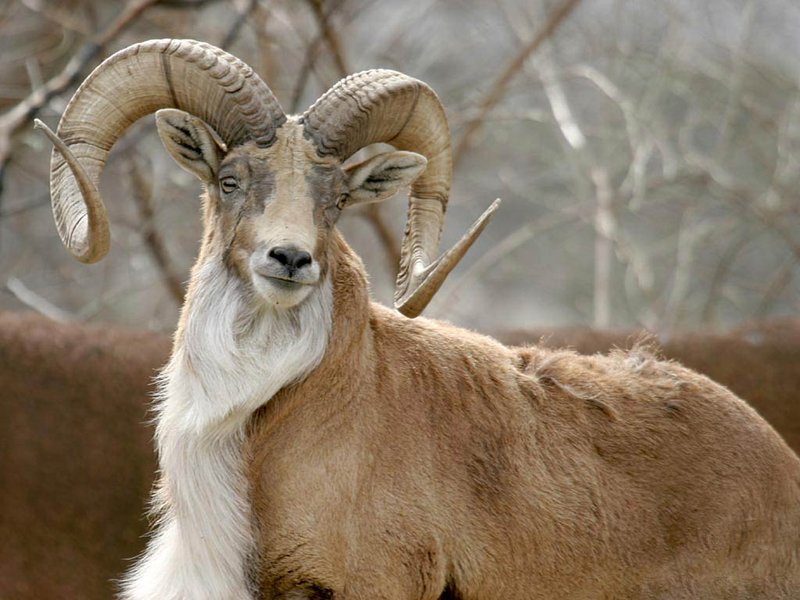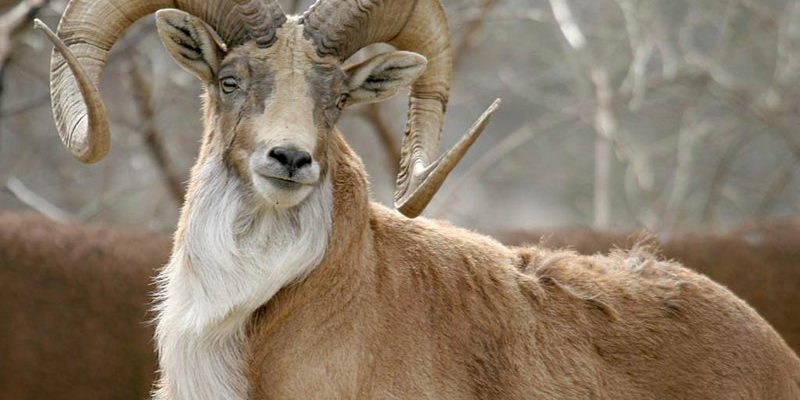
You might be wondering why the urial deserves a spot in your memory. It plays an important role in its ecosystem and highlights the beauty and complexity of wildlife. So, let’s dive into some of the most intriguing facts about the urial and discover what makes this animal not just a sheep, but a remarkable creature of nature.
1. A Unique Species of Wild Sheep
The urial, scientifically known as *Ovis vignei*, is a wild sheep species that can be spotted across the mountainous terrains of countries like Pakistan, India, and Afghanistan. They have a distinctive appearance, with males boasting impressive curved horns that can grow up to 36 inches long. These horns aren’t just for show; they help establish dominance during mating season. You might see these majestic creatures interacting with their environment in ways that seem almost choreographed.
Their bodies have evolved to thrive in steep and rocky habitats, making them excellent climbers. Think of them as nature’s mountain goats, gracefully bounding over rocky outcrops and steep trails. Here’s a fun fact: urials can weigh between 90 and 200 pounds, and their coats range from reddish-brown to gray, helping them camouflage against the rocky landscapes where they roam.
2. Social Structures and Behavior
Urials are social animals that often form herds, which can number anywhere from a few individuals to over thirty. These groups usually consist of females and their young, while males tend to be more solitary, especially outside of the mating season. Isn’t it interesting how their social dynamics shift depending on the time of year? During mating season, males will gather with females and engage in displays of strength to attract attention.
You might think these strong, majestic creatures are all about brute force, especially during mating rituals. But here’s the kicker: they also engage in playful sparring. Young males practice their fighting techniques by gently butting heads, honing their skills for when it really counts. It’s like an animal training camp out there, where they learn the ropes of survival and reproduction.
3. Remarkable Adaptations to Harsh Environments
Living in rugged terrains can be tough, but urials have developed amazing adaptations to survive. Their hooves are uniquely shaped to provide stability on steep cliffs, allowing them to navigate tricky paths with ease. This is crucial, especially when they need to escape from predators like leopards and wolves.
You might be amazed to learn that urials are excellent foragers. They primarily eat grasses, herbs, and leaves, which they find in their mountainous habitats. Their ability to seek out nutritious food while navigating rocky slopes shows just how well-adapted they are to their environment. This diet plays a significant role in maintaining the biodiversity of the areas they inhabit.
4. Conservation Status and Threats
Unfortunately, the urial faces several threats that put its populations at risk. Habitat loss due to human expansion, hunting, and competition with domestic livestock have led to a decline in their numbers. The International Union for Conservation of Nature (IUCN) lists the urial as vulnerable, which is definitely concerning.
Efforts are underway to protect this species, including creating protected areas and enforcing hunting regulations. For example, in Pakistan, certain regions have been designated as national parks or wildlife reserves, aiming to provide a safe sanctuary for the urial. It’s a good reminder that conservation efforts can make a significant difference in protecting our planet’s wildlife.
5. The Importance of Urials in Ecosystems
Urials are more than just fascinating creatures; they play an important role in their ecosystems. By grazing on grasses and plants, they help keep vegetation in check, which promotes healthy growth for other species. It’s like they’re nature’s gardeners, maintaining the balance of their habitats.
Through their movements and foraging habits, urials also contribute to soil health. As they roam around, they help aerate the soil and disperse seeds, which can lead to greater plant diversity. The connection between urials and their environment showcases the intricate web of life in which all species, big and small, play a part.
6. Adaptations for Survival
Aside from their impressive climbing abilities, urials have developed other fascinating adaptations. For example, their keen eyesight allows them to spot predators from a distance. You might say they have built-in surveillance systems that help them stay alert in their rocky homes.
Moreover, their thick woolly coats are not just for looks—they provide excellent insulation against cold temperatures, especially in the higher altitudes where they often live. This dual purpose of their coats reflects their ability to not just survive but thrive in challenging climates. Isn’t it incredible how nature tailors its creatures to their environments?
7. Reproduction and Lifespan
Urials typically breed once a year, with the mating season usually occurring in the fall. After a gestation period of about five months, females give birth to one or occasionally two lambs in the spring. The young urials are quite adorable, with their small frames and playful antics as they learn to navigate their surroundings.
These lambs grow quickly, relying on their mothers for nourishment and protection during their early months. In the wild, urials can live up to 10 to 12 years, but many face challenges that can shorten their lifespan. From predation to disease, life for an urial isn’t always easy, but their tough spirit helps them navigate the ups and downs of their existence.
8. Cultural Significance and Folklore
In many cultures across Central and South Asia, the urial holds a special place in folklore and traditional stories. They are often seen as symbols of strength and resilience, reflecting the rugged landscapes they inhabit. In some regions, people even celebrate the urial during festivals, emphasizing the connection between the animal and local cultures.
This cultural significance underscores the importance of urials beyond their ecological role. By recognizing and valuing these animals, communities can foster a deeper appreciation for biodiversity and the natural world. It’s a reminder that our relationships with wildlife can enrich our lives in many ways.
9. Comparing the Urial to Other Wild Sheep
When you think of wild sheep, you might picture bighorn sheep or other relatives. So, how does the urial stack up against them? For starters, urials are slightly smaller than bighorn sheep, but they share similar habitats and behaviors. Both thrive in mountainous regions, yet their physical traits and social structures differ.
Bighorn sheep, for instance, are known for their massive, curved horns and tend to live in larger herds. In contrast, urials often form smaller groups, especially among males. Understanding these differences not only highlights the diversity within the sheep family but also illustrates how each species has adapted to its unique environment.
10. How to Help Protect the Urial
If you feel inspired to help protect the urial and its habitat, there are several ways to get involved. Supporting conservation organizations that focus on wildlife protection is a great start. You can also raise awareness about the importance of preserving natural habitats and biodiversity.
Additionally, responsible tourism can play a role in conservation. If you’re traveling in areas where urials live, consider supporting eco-friendly tours that educate visitors about the wildlife and their habitats. By making informed choices, we can all contribute to the well-being of our planet’s incredible creatures.
In conclusion, the urial is a remarkable wild sheep with intricate behaviors, a critical role in its ecosystem, and a rich cultural significance. By learning about these animals and supporting efforts to protect them, we can ensure that future generations will also appreciate their fascinating presence in nature. Isn’t it amazing how much there is to discover when we take a closer look at the wildlife around us?

